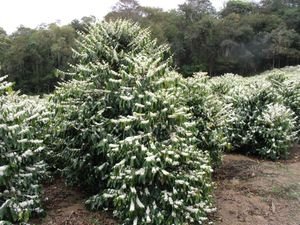Fresh Gourmet Coffee
Fresh Gourmet Coffee by Ross MacIver
Coffee is one of the most popular beverages in the world. It's rich, full-bodied taste is a daily necessity to millions of people. Of course, coffee is not only loved for its taste. The caffeine kick is needed by many to start the day. But if you are a true coffee lover, fresh gourmet coffee has a taste that can't be beat.
Luckily, it's easy to get a hit of fresh gourmet coffee almost everywhere. There are coffee shops on almost every street corner and quality coffee beans are sold in many specialty shops as well as supermarkets.
“Fresh” is the key to fresh gourmet coffee. Coffee simply does not improve with age -- it should be used within six months of production. Some of the large coffee distributors include old coffee beans in their mixes to reduce the cost. Needless to say, this practice also reduces the flavor.
Fresh gourmet coffee costs a bit more than regular supermarket coffee. That's because it's made from high quality Arabica coffee that has been hand-picked in processed. Commercial grade coffee is made from the cheaper Robusta coffee which has an inferior taste and texture than Arabica.
Commercial grade coffee is also machine picked and processed which means that foreign substances such as twigs and leaves find their way into the finished product. When you buy fresh gourmet coffee, you are assured of the quality and taste.
You have many choices when it comes to fresh gourmet coffee. Each coffee growing region produces a uniquely flavored coffee bean and the processing method to also determines the final taste of the coffee. The roasting method in particular determines the kind of coffee taste.
Fresh gourmet coffee should be ground just before brewing. You need a coffee grinder in your home if you want to the best tasting coffee possible. A good-quality coffee maker is also a necessity when making great tasting coffee.
Ross is author of the Coffee Specials and Gourmet Basket section at Steaks-Guide.com
Provided By: Food and Drink
Coffee is one of the most popular beverages in the world. It's rich, full-bodied taste is a daily necessity to millions of people. Of course, coffee is not only loved for its taste. The caffeine kick is needed by many to start the day. But if you are a true coffee lover, fresh gourmet coffee has a taste that can't be beat.
Luckily, it's easy to get a hit of fresh gourmet coffee almost everywhere. There are coffee shops on almost every street corner and quality coffee beans are sold in many specialty shops as well as supermarkets.
“Fresh” is the key to fresh gourmet coffee. Coffee simply does not improve with age -- it should be used within six months of production. Some of the large coffee distributors include old coffee beans in their mixes to reduce the cost. Needless to say, this practice also reduces the flavor.
Fresh gourmet coffee costs a bit more than regular supermarket coffee. That's because it's made from high quality Arabica coffee that has been hand-picked in processed. Commercial grade coffee is made from the cheaper Robusta coffee which has an inferior taste and texture than Arabica.
Commercial grade coffee is also machine picked and processed which means that foreign substances such as twigs and leaves find their way into the finished product. When you buy fresh gourmet coffee, you are assured of the quality and taste.
You have many choices when it comes to fresh gourmet coffee. Each coffee growing region produces a uniquely flavored coffee bean and the processing method to also determines the final taste of the coffee. The roasting method in particular determines the kind of coffee taste.
Fresh gourmet coffee should be ground just before brewing. You need a coffee grinder in your home if you want to the best tasting coffee possible. A good-quality coffee maker is also a necessity when making great tasting coffee.
Ross is author of the Coffee Specials and Gourmet Basket section at Steaks-Guide.com
Provided By: Food and Drink

